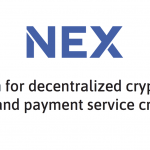Nxt is an advanced blockchain platform which builds on and improves the basic functionality of pioneering cryptocurrencies such as Bitcoin. It uses proof-of-stake to reach consensus for transactions—as such there is a static money supply and, unlike bitcoin, no mining.
Nxt was specifically conceived as a flexible platform around which to build applications and financial services. The platform includes many core-level features, such as a Decentralized Asset Exchange, Marketplace, and Voting system, all in additional to the NXT digital currency itself.
Nxt is easy-to-use, permissionless and gives its users complete freedom in many ways. For example, using the NXT currency as a payment system cannot be restricted, creating a marketplace listing cannot be denied, and, for developers, neither is creating advanced blockchain-based applications through the Nxt Application Program Interface (API).
Nxt is not an altcoin such as Litecoin, peercoin, or others who have their code based on Bitcoin’s source code. It is brand new from scratch with its own code.
Nxt: Blockchain 2.0
One of the most essential elements of Nxt is arguably the blockchain itself. This is the sequence of blocks that contain the complete transaction history since the creation of Nxt in 2013. New transactions are recorded as part of new blocks processed in a decentralized manner into the chain, thus incorporating those new transactions into the Nxt blockchain.
The first generation of cryptocurrencies pioneered the concept of using a blockchain to keep a secure, trustworthy, and stable, yet completely decentralized and open record of transactions. Initially, blockchain technology was primarily used to track the transaction and creation of cryptocurrencies.
Nxt bills itself as a “second-generation” cryptocurrency. What this means is that Nxt – and other currencies like it – are less concerned with functioning as a standalone currency and more concerned with providing a decentralized system for online exchange. It comes equipped with a toolkit for creating custom cryptocurrencies that are then secured and tracked in Nxt’s ledger.
Proof-of-Stake Consensus Mechanism
While bitcoin uses hashing power as proof for verifying transactions, Nxt works with the stake-size the user owns. Block authors are selected in a practically random manner, with greater amounts of stake increasing the likelihood of adding a block to the chain. While in the case of bitcoin the cost of investing in mining gear serves as an incentive not to attack the network, anyone seeking to attack Nxt would in the process necessarily reduce the value of their personal coin holdings. This effectively avoids the security issue of a miner gaining more than 50% of the hashing power and attacking the network.
Transparent Forging
This will allow NXT to approach Visa/Mastercard rates of transactions. No other cryptocurrency can scale this high; this is possible with NXT because the transparency provided in the protocol will allow each user’s client to determine which node will generate the next block. Other nodes can then send their transactions directly to that node. This also allows additional fees to be realized for immediate/priority transactions. An equally important feature of Transparent Forging is a security mechanism to prevent forked chains from being forged by high-stake nodes. This prevents against even a 90% majority owner of all NXT branching out and forcing a fork.
Top features
The core infrastructure of Nxt is complex. This adds risks as compared to the leaner bitcoin, but makes it easier for external services to be built on top of the blockchain.
Decentralized Exchange
How are coins currently traded? Well, you have to sign up for an account on a centralized platform such as Cryptsy/BTC-E/Bter/etc, transfer your BTC to them, and pay them a varying percentage fee for transactions, sometimes along with a fee to withdraw. This method comes with the risk of unregulated centralized exchanges or marketplaces stealing funds, which actually occurred recently when the Sheep Marketplace absconded with 96,000 BTC, resulting in one of the largest thefts in history. NXT is developing a peer-peer exchange into the protocol to allow for decentralized trading which will eliminate this trust point and to reduce trading fees to regular network transaction fees.
Colored Coins
NXT (pun intended) is one of the more curious services, colored coins, which go hand in hand with a decentralized exchange. First though, some background: With the Bitcoin blockchain, transactions can be traced. Not to a person mind you, but what is meant is that an individual coin or pieces of that coin can be traced back on a transaction by transaction basis. Since this is the case, then if it was possible to expand the protocol to allow a person to designate or “color” a particular coin, we could build a bridge from the virtual crypto currency world to the physical world.
That colored coin can then be used to represent some physical entity here on earth. Property, stocks/bonds, commodities, or any concept that can be concretely identified could be colored. This additional realization of NXT’s blockchain is exactly what is being built into the code to allow for decentralized trading of real property. Coupled with a decentralized exchange, colored coins become a very powerful next generation currency.
Data Storage
Arbitrary Messages enable the sending of encrypted or plain text, which can also function to send and store up to 1000 bytes of data permanently, or 42 kilobytes of data for a limited amount of time. As a result, it can be used to build file-sharing services, decentralized applications, and higher-level Nxt services.
Alias System
The Alias System feature of Nxt essentially allows one piece of text to be substituted for another, so that keywords can be used to represent other things – names, telephone numbers, physical addresses, web sites, account numbers or emails. This would for example allow for a decentralized DNS system similar to Namecoin.
Voting System
Allowing holders of the currency or Nxt-Assets to vote in a cryptographically proven and externally verifiable way. This can be used for future development decisions, or for shareholder voting. It can also be applied to public elections and community based decision-making.
Plugin Support
A plugin running on NXT test-net will allow easier crowdfunding. The standard client supports the installation of plug-ins. This makes it possible for external developers to add features or usability enhancements. The plug-ins are not contained in a sandbox.
Monetary System
Implemented in version 1.4.8, the Monetary System allows the creation of currencies on the Nxt blockchain. These coins are backed by a specified amount of NXT, which can be redeemed if necessary. The possible properties range widely - including different models of inflation, exchange and the use of Proof-of-Work as distribution system.
Multi-signature and Phased transactions
The latest client (1.5) supports a method (named Phasing for Nxt) for requiring specific conditions for executing a transaction. Such as approval of multiple accounts or the passage of an interval of time.
Green & Earth Friendly
Let’s talk more about NXT and efficiency. Everyone knows Bitcoin is based on Proof of Work. That is, there are thousands of miners around the world crunching away at hashes and gobbling up TONS of power. Proof of Stake doesn’t involve ‘mining’ per se, so it’s important to realize that unlike Bitcoin exists currently, and like Bitcoin will exist in 2140 when all of it is mined, all NXT that will ever exist already exists, so client wallets now forge (in NXT the term ‘mining’ is replaced with ‘forging’) for transaction fees. Since this can be done on a client wallet loaded on a PC (CPU forging), it is MUCH more environmentally friendly and power efficient, and is also immune to CPU zombie forging.
Nxt (NXT)Token
Overview:
Current coin Value: $0.094607
Market Cap: $94,512,891
Circulating Supply: 998,999,983 NXT
Max Total Supply: 1,000,000,000 NXT
NXT is the digital currency that acts as the fuel for the Nxt ecosystem. In addition to it being used as a transaction fee when being transferred from one user to another, it is also used to create assets that can represent things like bonds or ownership of a project, create a decentralized poll on the blockchain, or storing arbitrary data on the blockchain. Of course, it can also be used as an external currency, in the same way that you can spend Bitcoins or dollars to buy goods and services.
The coins are pre-mined. The term “pre-mined” is a misnomer. Nxt coins are not mined at all. The original stakeholders in Nxt contributed Bitcoin in order to seed the creation of the 1 billion coins represented in the genesis block, and these coins were distributed among the original stakeholders. The stakeholders are expected to distribute coins by donating them, using them as “bounties” to pay for work on the coin (software, documentation, translations, support, etc.) that is done by the community.
Wallets
Unlike Bitcoin or other altcoins, there is no wallet with Nxt. More specifically, the coin uses a “brain wallet”, which is to say that wallets are decentralized and kept on the network. When you create an account in Nxt, your secret passphrase is used to create your account number. Once your account number is generated, you can unlock it and access it by using your passphrase on any running Nxt node.
Exchanges
DGEX.com
BTER.com - Bitcoin and Crypto-currency Exchange Platform
Vircurex.com - Exchange and Trading Platform
Cryptsy.com
PeerCover.com - NXT Ripple Gateway
Poloniex.com - NXT / BTC / LTC / NMC / XPM Cryptocurrency Exchange
Nxt-e.com - Professional NXT Bitcoin Litecoin Exchange Market
Bittrex.com - The Next Generation Crypto-Exchange
NxtBtc.com - NXT / BTC Exchange (No JavaScript Required)
UpBit.org - Crypto Exchange
CryptoKopen.eu - Buy Nxt with Skrill
BitcoiNxt.net
LiteBit.eu
QuickNXT.com - Nxt Asset Gateway (Under Develoment)
After the decentralized asset exchange feature is released, you will be able to buy and sell Nxt for any currency issued on the Nxt network.
[currencyprice currency1=”nxt” currency2=”usd,eur,btc”]
[currencygraph currency1=”nxt” currency2=”usd”]



















